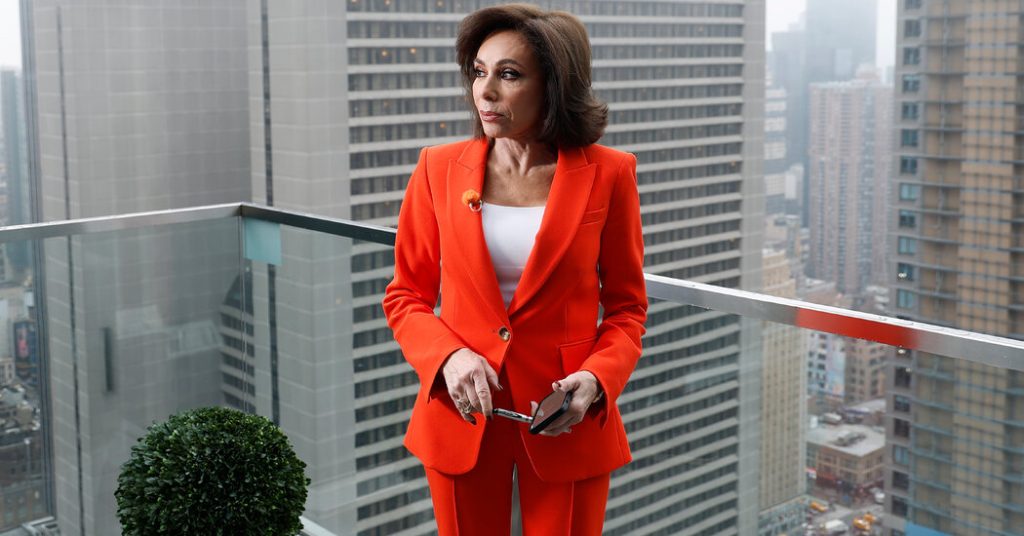When Serena Williams steps out onto the hard courts of the U.S. Open on Monday for what may be her last tournament, she will do so in a little black (tennis) dress with long sheer sleeves, a six-layer skirt — one tier for every U.S. Open title she has won — and a bodice sparkling with a galaxy of stars. It is a dress made for a supernova’s farewell. It is fitting, in more ways than one. If you’re not paying attention to the symbolism, you’re whiffing the point.
After all, Ms. Williams did reveal her plans to end her tennis career in an essay published not in ESPN or Sports Illustrated or Tennis Week but in the September issue of Vogue. Though the choice, with its accompanying cover shoot of Ms. Williams in an array of evening gowns, was met with some head-scratching in the sports world, it should have surprised no one.
Since she turned professional in 1995, Ms. Williams, 40, has wielded self-presentation as effectively as any athlete as a weapon of change; what she wore has been as carefully honed and considered a part of her long game as any serve or forehand. She smashed barriers of race, age and background, and she smashed the old dress codes of tennis.

The Nike dress Serena Williams will wear at the U.S. Open on Monday. It has a six-layer skirt, one for each of the six U.S. Open titles Ms. Williams has won.Credit…via Nike
She always had a bigger plan than just sports, and it was an intention embedded in the imagery she helped create. It was never just about adding a stripe here, some neon there. It was about self-realization, about expanding the definition of what was possible in myriad ways — physically, professionally — and who got to decide.
Her on-court wardrobe was a “visual manifestation of her fun, her energy and her barrier-breaching mentality,” said Gabriella Karefa-Johnson, the editor who styled the Vogue shoot. It was calculated to succinctly make the point, said Tania Flynn, the vice president for women’s apparel design at Nike, “that women deserve to be seen.”
As the rare Black woman in tennis, and one with a back story and a body that didn’t conform to the sport’s favored mythology, Ms. Williams knew “how many eyes and how many cameras were on her,” said John Hoke, the chief design officer of Nike, who has been working with her for almost 20 years.
And if, said Gerald Marzorati, the author of the 2021 book “Seeing Serena,” “attention was going to be paid, her attitude was: I’m going to be a subject of that attention, rather than an object.”
If people were going to be looking, and judging, she might as well use that scrutiny not just to further her tennis career, but to change the playing field for everyone. Her racket was one way to do that. Fashion was another.
Breaking Through the Old Codes
When Ms. Williams and her older sister, Venus, arrived on the scene, women’s tennis dress, like tennis itself, was still stuck in the mire of tradition, associated with an antiquated image of a blond pony-tailed sprite zipping around a court in a teeny tiny little “skirt” or “dress” that was like a notional remnant of the longer dresses that came before.
It was highly gendered, in the most stereotypical kind of way (this is a sport, after all, where until the late 20th century female tennis players wore frilly bloomers, like baby dolls, under their faux skirts) and very white. Literally, in the case of the All England Lawn Tennis and Croquet Club, a.k.a. Wimbledon, where the player dress code specifies dress color.
It was, said Richard Thompson Ford, a professor at Stanford Law School and the author of “Dress Codes: How the Laws of Fashion Made History,” “an extension of the country club. And the costume reflected that.”
Sure, fashion had been an occasional tool of disruption since Suzanne Lenglen shortened her hemlines in the 1920s and “there were lines of people waiting to see her play at Wimbledon in a skirt above her ankles,” Mr. Marzorati said.
Sure, on the men’s side, Andre Agassi ushered in a moment of change with his mullet, jeans shorts and neon, scandalizing the powers that be. (He boycotted Wimbledon for three years because of the dress code.) And many of the sport’s previous Black players — Althea Gibson, Arthur Ashe, Zina Garrison — dressed, Mr. Ford said, in the style of “respectability politics,” to fit in.
“Stylistically, tennis has been historically a very conservative sport — a gentlemen’s sport,” Ms. Karefa-Johnson said. “Of course, all of these semantics really just reinforce the white supremacy latent in the sport and justify the exclusion of any person or body that stands outside of the prescribed participants and audience. Serena blew up that fallacy.” She refused to be anything other than herself.
Mr. Ford called it “a different way of integrating a sport.”
It began when Ms. Williams and her sister took to the court in their beads and braids and continued through the years, becoming evermore deliberate and political. Mr. Hoke of Nike, where there is a design building named in Ms. Williams’s honor, said that on a scale of 1 to 10 of involvement with her clothes, she is a 10.
If at first her interest was simply about expressing a certain joy in dressing up — about dipping into streetwear trends with denim and studs and runway trends with snakeskin and mesh — it became about being a woman of power and having the profile to call out perceived injustice and inequality; about being a mother and an activist; about, as Ms. Flynn of Nike said, “the message.”
Sometimes literally so, as when Ms. Williams wore a black and white crop top and tennis skirt with matching trapeze jacket and maxi overskirt to the French Open in 2019 splashed with the French words for “Mother, champion, queen, goddess.” (It was created with Virgil Abloh of Off-White, a designer who likewise understood something about opening doors and who became a close friend of Ms. Williams before his death in 2021.)
And sometimes more implicitly, as with the black catsuit she wore to the French Open in 2018, which was designed in part to manage potential blood clots after a difficult childbirth, and in part to reflect the status of working mothers as “superheroes,” as she said at the time. It set off such a firestorm — the French officials deemed it a dress code violation — that her next outfit, a one-sleeve tutu worn to the U.S. Open and also designed by Mr. Abloh, seemed a riposte to those who deemed the previous look not “feminine” enough.
It got to the point, Mr. Marzorati said, that “watching Serena come out of the tunnel onto the court and discovering what she was wearing” was an event unto itself.
But while viewers may have ogled the outfit, they ended up absorbing the point.
Breaching the Fashion Barrier
Fashion and tennis were intertwined for Ms. Williams pretty much from the beginning. If her father, Richard Williams, created the template for her athletic career, her mother, Oracene Price, laid the groundwork for her clothing appreciation.
Ms. Price taught her to sew when she was two or three, and, Ms. Williams has said, “I used to watch her put those old Vogue patterns on the floor and cut out the outfits.”
Ms. Williams jumped to actual Vogue in 1998, when she and her sister posed for the magazine in black and white Carolina Herrera, an appearance that heralded the start of a friendship with Anna Wintour, the Vogue editor (and tennis superfan), that has been by, Ms. Williams’s description, formative.
“She’s a special person, and I just absolutely completely adore her,” Ms. Williams told Naomi Campbell on her YouTube show, “No Filter With Naomi.” “I love being around her. I love her brain.”
In return, in an email, Ms. Wintour called Ms. Williams “fearless” in her playing, her wardrobe and her facility in “erasing boundaries.”
She certainly erased some Vogue boundaries, becoming the first Black female athlete on the cover of Vogue, in 2012, alongside the soccer player Hope Solo and the swimmer Ryan Lochte, and since then appearing on more Vogue covers than any other athlete.
She had solo covers in 2015, 2018 and 2022 (the last two with her daughter, Alexis Olympia Ohanian Jr.). Ms. Wintour took her to fashion shows — Ms. Williams chronicled one trip to Milan on Instagram — and not only suggested her wedding dress designer, Sarah Burton of Alexander McQueen, but also consulted on every sketch.
In 2018, Ms. Williams followed her sister, Venus, who had started her own fashion line in 2007, into clothing design (both attended design school at the Art Institute of Fort Lauderdale, though Serena didn’t graduate) and in 2020 unveiled her S by Serena line at New York Fashion Week, a show that began with a fireside chat between Ms. Williams and Ms. Wintour.
The year before, she had been a host at the Met Gala, alongside Harry Styles, Lady Gaga and Alessandro Michele of Gucci, wearing Nikes with her Versace. The year after, she created the Serena Williams Design Crew at Nike to lower the barriers to entry for young designers of color with nontraditional backgrounds. She even walked a Paris Fashion Week runway last March, for the Off-White Virgil Abloh tribute show.
Before any of that, though, back in 2006, Chris Evert, a player who dominated women’s tennis in the 1970s and ’80s and who has since become chairperson of the U.S.T.A. Foundation and an activist for cancer research, wrote an “open letter” to Ms. Williams in Tennis magazine suggesting she had let such “distractions” take away from her tennis.
“I appreciate that becoming a well-rounded person is important to you,” Ms. Evert wrote. “Still, a question lingers — do you ever consider your place in history? Is it something you care about?”
From the vantage point of now, it’s an obsolescent query. Those “distractions” are in fact part of the bedrock of Ms. Williams’s legacy. Not to mention a signal, perhaps, of what is to come.




